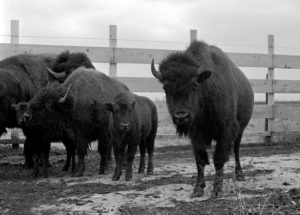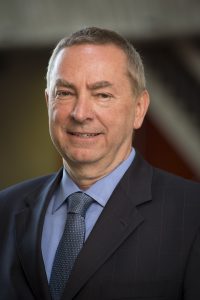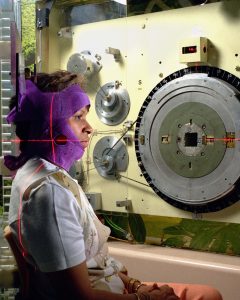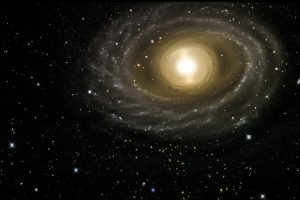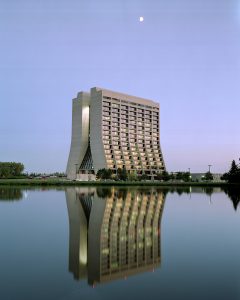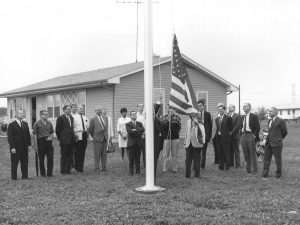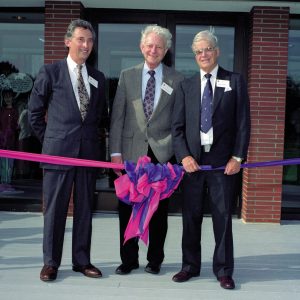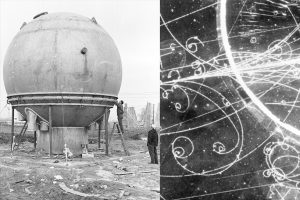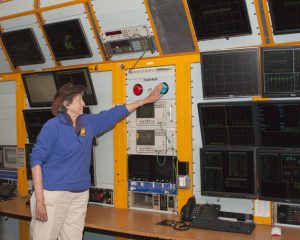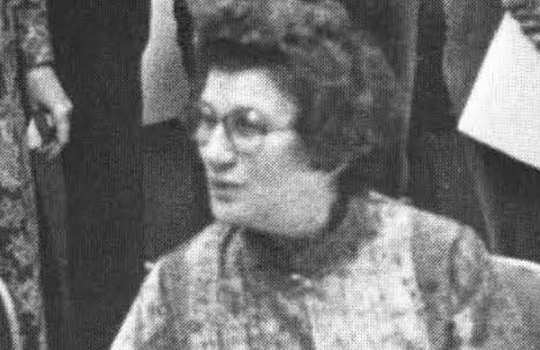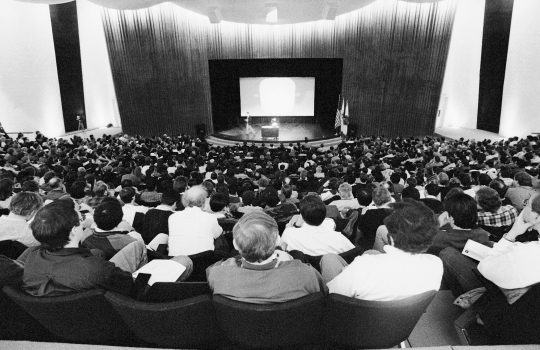In September, lab employees move to Weston, Colorado bison move to Illinois, and Nigel Lockyer moves to the United States. Read on for more September historical milestones.
September 1969: First bison arrive
In September 1969, the first bison arrived on the lab site. The first six animals were purchased by the lab from a herd in Colorado, and the next year a larger group arrived from a herd in Illinois. The bison were part of Director Robert R. Wilson’s vision of the lab as a physical and intellectual frontier and contributed to his goal of restoring some of the the native ecosystems of the area.
In September 1969, the first bison arrived on the lab site. The first six animals were purchased by the lab from a herd in Colorado, and the next year a larger group arrived from a herd in Illinois. The bison were part of Director Robert R. Wilson’s vision of the lab as a physical and intellectual frontier and contributed to his goal of restoring some of the the native ecosystems of the area.
Sept. 3, 2013: Lockyer becomes lab director
Nigel Lockyer became Fermilab’s sixth director on Sept. 3, 2013. Lockyer spent 22 years as a researcher on Fermilab’s CDF experiment and served as the co-spokesperson from 2002 to 2004. He also won the 2006 W.K.H. Panofsky Prize. When he became Fermilab’s director, he was director of Canada’s TRIUMF Laboratory.
Nigel Lockyer became Fermilab’s sixth director on Sept. 3, 2013. Lockyer spent 22 years as a researcher on Fermilab’s CDF experiment and served as the co-spokesperson from 2002 to 2004. He also won the 2006 W.K.H. Panofsky Prize. When he became Fermilab’s director, he was director of Canada’s TRIUMF Laboratory.
Sept. 7, 1976: Neutron Therapy Facility treats first patient
Director Robert Wilson is sometimes known as the “father of proton therapy” for his 1946 paper “Radiological Use of Fast Protons,” which first suggested the idea of using protons for medical treatment. Wilson helped organize Fermilab’s Cancer Therapy Facility, as it was originally known, using funding from the National Cancer Institute and beam from Fermilab’s Linac. The Neutron Therapy Facility treated its first patient on Sept. 7, 1976. In 1989, Fermilab would design and build a proton accelerator for Loma Linda University Medical Center in California, the first hospital-based proton treatment center.
Director Robert Wilson is sometimes known as the “father of proton therapy” for his 1946 paper “Radiological Use of Fast Protons,” which first suggested the idea of using protons for medical treatment. Wilson helped organize Fermilab’s Cancer Therapy Facility, as it was originally known, using funding from the National Cancer Institute and beam from Fermilab’s Linac. The Neutron Therapy Facility treated its first patient on Sept. 7, 1976. In 1989, Fermilab would design and build a proton accelerator for Loma Linda University Medical Center in California, the first hospital-based proton treatment center.
Sept. 12, 2012: Dark Energy Survey receives first light
Fermilab is a member of the Dark Energy Survey, an international collaboration formed in 2003 that uses a camera mounted on the Blanco Telescope in Chile to study the effects of dark energy. On Sept. 12, the Dark Energy Survey’s Dark Energy Camera received first light.
Fermilab is a member of the Dark Energy Survey, an international collaboration formed in 2003 that uses a camera mounted on the Blanco Telescope in Chile to study the effects of dark energy. On Sept. 12, the Dark Energy Survey’s Dark Energy Camera received first light.
Sept. 18, 1980: Wilson Hall named
Shortly after Fermilab’s first director, Robert R. Wilson, retired, the lab renamed the Central Laboratory Building to Wilson Hall in his honor.
Shortly after Fermilab’s first director, Robert R. Wilson, retired, the lab renamed the Central Laboratory Building to Wilson Hall in his honor.
Sept. 24, 1968: Move to Weston
NAL employees started moving to the Weston site during the summer of 1968 and completed the move at the end of September.
NAL employees started moving to the Weston site during the summer of 1968 and completed the move at the end of September.
Sept. 25, 1992: Dedication of Lederman Science Education Center
Fermilab’s Lederman Science Education Center was named in honor of the lab’s second director, Leon Lederman, in recognition of his work to improve science education.
Fermilab’s Lederman Science Education Center was named in honor of the lab’s second director, Leon Lederman, in recognition of his work to improve science education.
Sept. 29, 1973: 15-Foot Bubble Chamber commissioned
Bubble chambers detect particles by recording tracks of bubbles the particles leave in liquid, and Fermilab was home to the largest liquid-hydrogen bubble chamber in the world. The 15-Foot Bubble Chamber photographed its first particle trails on Sept. 29, 1973. It would record its last tracks on Feb. 1, 1988.
Bubble chambers detect particles by recording tracks of bubbles the particles leave in liquid, and Fermilab was home to the largest liquid-hydrogen bubble chamber in the world. The 15-Foot Bubble Chamber photographed its first particle trails on Sept. 29, 1973. It would record its last tracks on Feb. 1, 1988.

